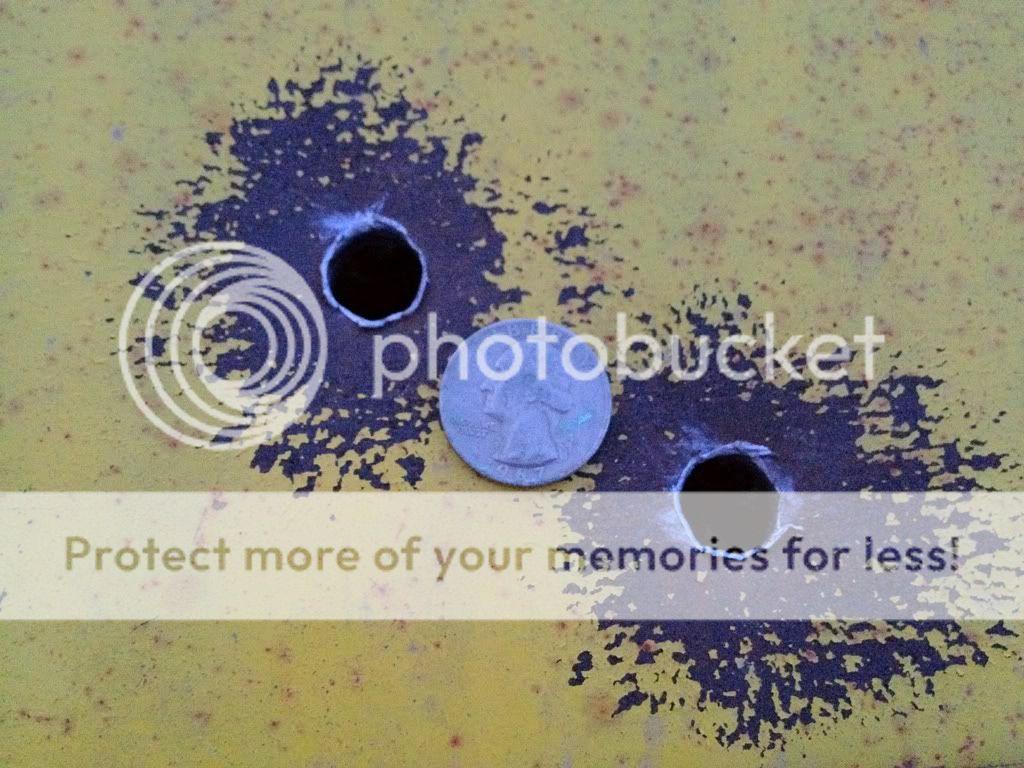BTW, appoximately how many rounds have you put through the rifle? I am wondering if my barrel is ever going to break in. It fouls horribly and quickly.
I am seriously considering fire lapping.
The rifle has somewhere around 150 rounds through it. I am convinced that the only time copper should be removed out of the barrel is during the break in process. This usually requires 55 rounds or so. Once break in is complete, only remove the carbon build up. If you remove the copper each time you clean, the bullets will have to re-coat the bearing surface before tighter groups will start to appear once more.
As far as my extraction issue is concerned, I am looking into bolt issues possibly. It may be something else, but my bolt is too stiff even without a case in the chamber. My primers are flat as well, but the load is way under the max and shouldn't have any pressure signs.
I have been watching the Magpul rifle precision videos and have learned a lot. It has explained many of the issues I was curious about. The guys were consistently making 1 mile shots with a .308. Yes a 308. Many problems we are having may also be related to our shooting style. I am not sure about bench rest shooting because I always shoot prone.
While prone, be sure you are straight behind the rifle. Your rifle should make a direct line going down your right check and inner right knee. This is very important. You want the recoil to come straight back. Many other shooting positions don't allow for this.
Making sure your crosshairs are level to the horizon, not just the rifle. This is tricky if you dont have a scope level. The effects of not having it level appear as close as 100 yards.
Dont wrap your thumb around the grip. Keep it directly behind the chamber. There is a natural tendency for the recoil to be skewed when your thumb is wrapped around the grip. Dont wrap your fingers around the grip if it's a bolt gun. Just press your finger tips directly onto the grip into the pocket of your shoulder. The easiest way to explain the proper grip is comparing to a jet fighter stick grip. 4 of your fingers should curl and press against the front of the grip, not wrap around it. Your thumb should be on top behind the bolt and your trigger tip should press evenly against the trigger. No grasping anywhere. Just slight pressure. Our hand should support, not manipulate the rifle.
Keep your elbows bent. This absorbs the recoil evenly into the pocket of your shoulder.
Aiming should only be manipulated with your rear bag. Your shoulder, hand, etc should only hold it there, not manipulate the rifle at all.
All of this minimizes all signs of your pulse on the rifle.
Last..and very important. Always load your bipod gently with your shoulder and back. Not your feet, etc. Just lean into it..not moving it. Just apply pressure forward. Any changes in your loading of the bipod will affect the impact of your round. Consistency is king.
It seems like a lot to remember. But it gets easier once its reflex.
I was also educated on adjusting scope paralax as well. This is where your crosshairs move in the scope when you move your head side to side or up and down. Your crosshairs should never move unless your rifle does. Parallax is the main culprit many times for bad groups because our head wasn't in the exact same position each shot. To correct this, do the following:
1. Adjust the ocular focus (O/F) knob while in full zoom. This is the knob on the eye piece that is closest to your eye. You want a crisp reticle. Don't be concerned with the picture focus right now. Just the reticle. Its also important to not continuously look into the scope while you do this. Keep your scope eye closed while you adjust it and open your eye for a second to see if its crisp. This is to keep your eye from adjusting to make it clear for you. You don't want your own eye to adjust, you want to adjust the scope's O/F. So make adjustments, open your eye, make adjustments open your eye. Get it crisp.
2. Now you adjust your focus of the picture. You can keep your eye open during this I believe.
3. Now check if parallax still occurs by moving your head up and down while keeping your rifle still. If the reticle moves any you need further adjustment. Many times it still may have some movement.
4. If still moving, turn the O/F slightly in one direction and refocus the picture as well. If parallax is better, continue this process in that direction until no movement exists. If it becomes worse, turn the O/F in the opposite direction and continue process.
The amount of parallax you are left with depends on the quality of scope. Many times some parallax will remain. Your goal here is to minimize it as much as possible. If some remains, be sure you always position your eye at the same location when firing. Consistency is everything.
Anyhow. Hopes this helps someone.

